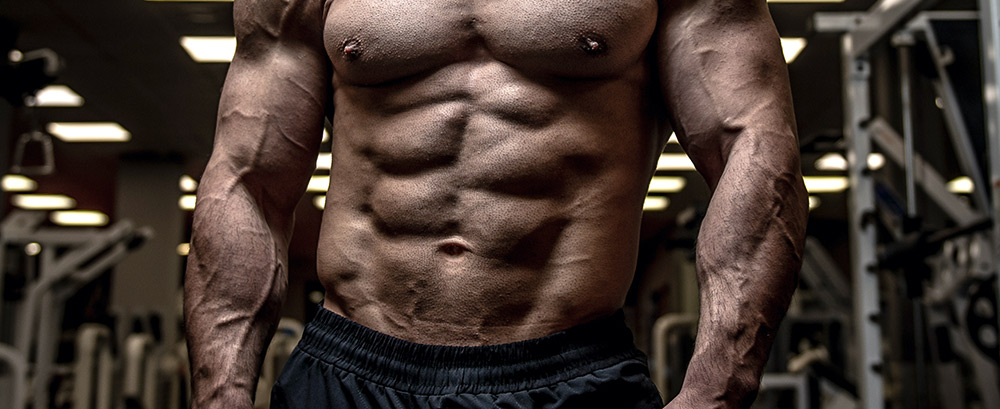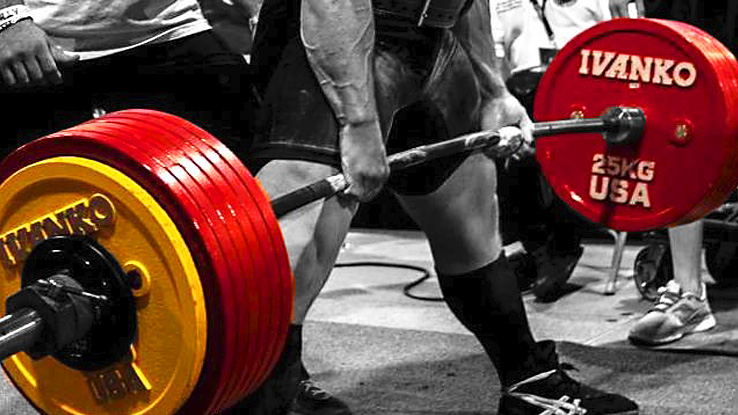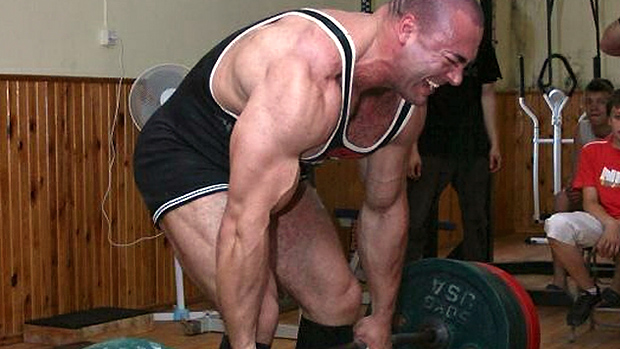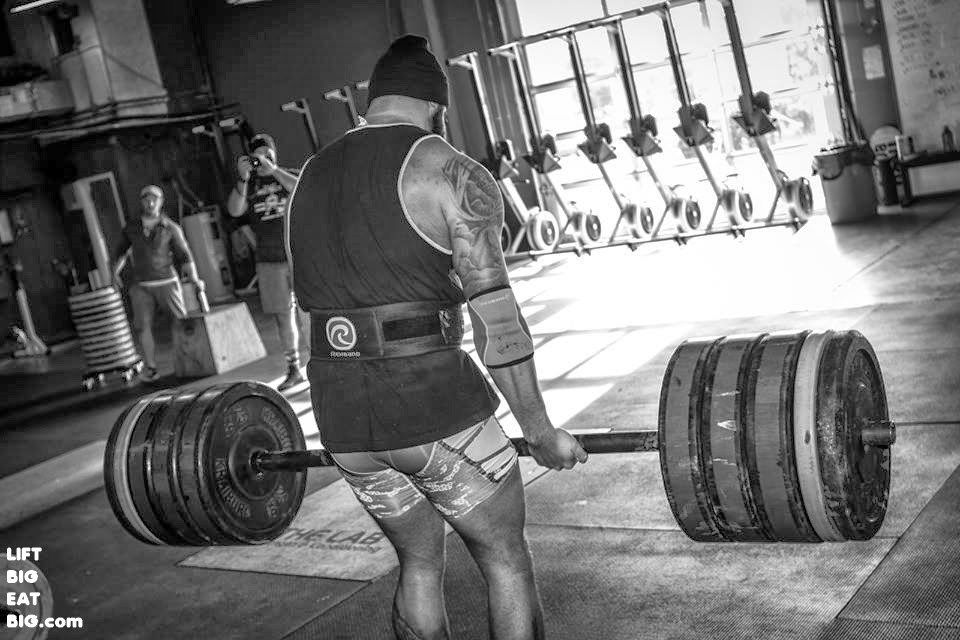Belt and Positioning
The belt should not alter your set up position. If it does, it is counter productive.
Below is a good article that provides solutions that might work
Chances are you're using the wrong belt when you deadlift. Worse yet, you may not even know why or how to use it.

www.t-nation.com
Two of the solutions are...
1) Using a belt with a smaller width in the ab area.
2) Position the belt up higher off the hips.
High Belt Position for Deadlifts Explained!
As Leeman states, wearing the belt down low constricts him and alters his technique.
Placing the belt higher increase greater support for the Deadlift lockout.
Final Solution
If neither of those work, you may do better going belt-less.
Upper Back Rounding
Some upper back rounding is natural with Conventional Deadlifters.
Upper back rounding does not create back issues. Lower back rounding does.
Dr Bret Contreras goes more into this in...
Always pull with a neutral spine. Well, maybe not always. Info here.

www.t-nation.com
One of the key points in this article is that upper back round decreases the distance of the bar to your Body's Center of Gravity.
The farther the bar is from your Body's Center of Gravity the greater the torque. That means the weight on the bar is magnified beyond its true load.
Keeping the bar in, as close as you can, places you in a stronger pulling position. That is one of the reason that you need to pull the bar back in on top of you and why some upper back rounding helps.
It's Time To Shut Up About Rounded-Back Deadlifts
Article written by Seth Larsen
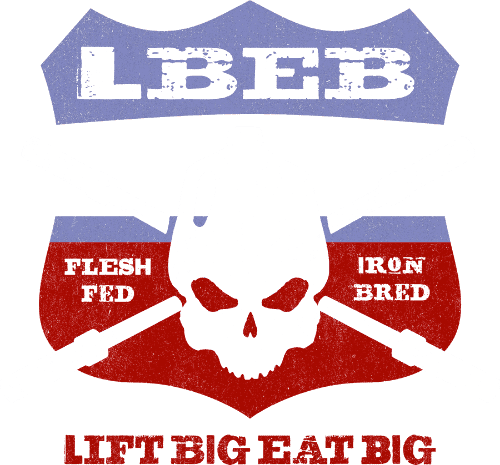
www.liftbigeatbig.com
This is another good article on Deadlifting with some upper back rounding.
Strong Abs
Most lifter want the same, strong abs. Heavy Squats and Deadlift play role in developing strong abs.
Dr Tom McLaughlin's (PhD in Exercise Bio-Mechanics, former Powerlifter) research involved Bill Kazmaier (former World Powerlifting Champion and World's Strongest Man). As per McLaughlin, Kazmaier's only abdominal training was Heavy Squat and Deadlifts.
While that worked for Kazmaier, McLaughlin stated that specific abdominal exercises are
Important. Source: "The Mechanics of Powerlifting", Powerlifting USA Magazine, 1981.
Intra-
abdominal pressure (IAP)
"Strong abs are like having an extra set of erectors."
Increasing abdominal strength increases the ability to generate greater Intra-abdominal pressure (IAP)
That pressure increases the support for you lower back; stabilization of the erectors.
The greater the stability of muscles in a movement, the more force (strength and power) generated.
Abdominal Strength for Squat and Deadlifts
Ironically, when lifter fold under the weight, like a cheap card table, in a Squat and Deadlift, most individual come often come to the conclusion that it's due to a weak back.
The majority of the time, the reason for them folding under the weight is due to weak abdominal muscles. Part the abdominal muscle job is to maintain you in an upright position.
Now let add to that.
Long Torso Individuals
Specific abdominal training is especially important for Long Torso Individuals. The torso is the bridge between the upper body and lower body.
The longer a bridge is, the greater the need for the support between the two ends. The same applies with Long Torso Individual.
"Leakage"
Dr Stuart McGill is one of the leading experts on core strength and training.
As per McGill, there is a "Leakage" of strength and power when the core isn't strong enough.
A strong core ensures that strength and power are maximally transferred between the lower and upper body.
A great analogy is Dr Fred Hatfield's, "You can't shoot a canon from a canoe."
McGill is adamant about increasing core strength with specific ab and back exercises.
Extra Abdominal Work
If you're serious about maximizing your abdominal strength/core strength, you need to make time.
That based on research from individual like Dr Tom McLaughlin, Dr Stuart McGill and others.
"Successful people are willing to do what others won't."



